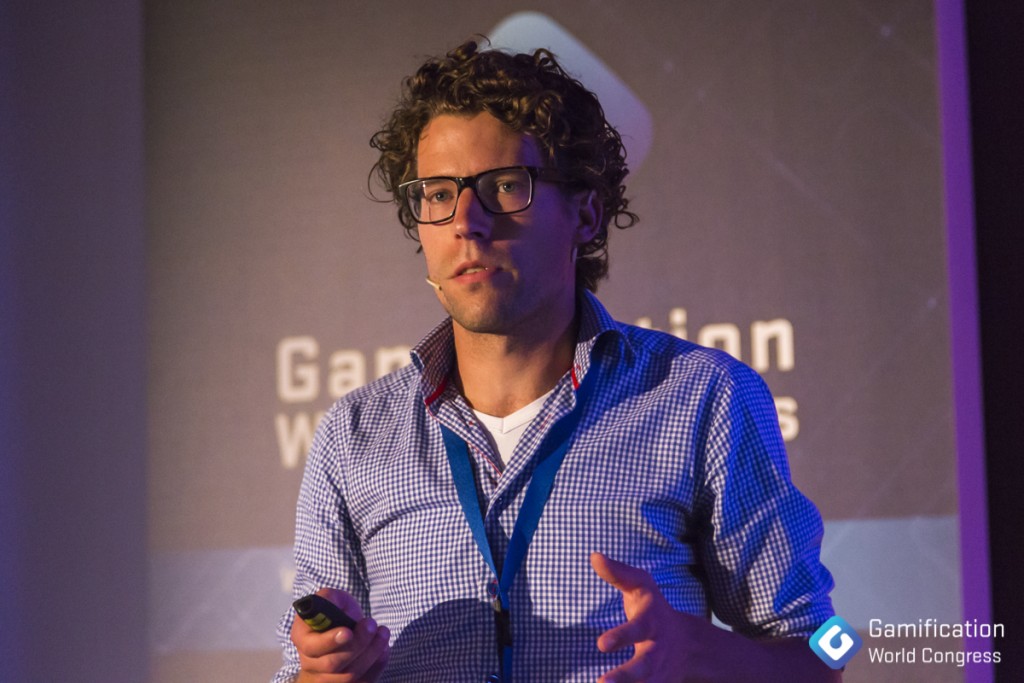This article was posted earlier on Gamifeye.
Fun is just another word for learning
Not knowing why you are learning is not really motivating. As kids learning math was not fun, because you did not have any context. Once you know why you are learning something, or even better if you can apply what you learn directly, learning is far more motivating. And when the difficulty level is right, learning even becomes fun.
Raph Koster states that fun is just another word for learning. And apparently this is true, but only under two conditions. One, that what you are learning feels useful, and two, that what you are learning can be applied within a foreseeable time frame. In the math example, learning did not feel useful in the first place and secondly it could not be applied within a foreseeable time frame. You had to wait for your career.
Context and work
This lack of motivation is not only present in the classroom, but also on the work floor. According to Robert Kaplan and David Norton, authors of Execution Premium: Linking Strategy to Operationsfor Competitive Advantage, “…only 7% of employees fully understand their company’s mission and what is expected from them in order to help achieve this mission.” Again here, there is no context and therefore a lack of motivation to work. If you had a far better understanding of the goals of the company you are working for, wouldn’t it be more challenging? You would know why you are doing things instead of just doing things because you’ve been told to do those things.
We need context
So apparently one of the things we need in order to be motivated is context. We need to know why we are doing something. Video games do provide this context and this is therefore one of the reasons why video games are very popular. Games provide a context since there are clear goals you need to fulfill.
But the funny thing is, if we look at work and video games, we can somehow see the same ingredients. This is mostly the case within project based organizations. Most companies work in a project organized manner, so these similarities are applicable for most companies. In video games there are scores, in work there is salary. In games there are levels which can be translated into job titles. Or the guild leader in an RPG can be compared with the project manager.
But then if the ingredients are roughly the same, why are people willing to pay to play games and why do we need to pay people to work? Well basically, because work is a badly designed game. At work, company and individual goals are often not clear. There is a lack of feedback on the things you do. There is often a mismatch between your capabilities and your work. And in work you do not always have the feeling of being in control. Games do have these features.
Guild leader
World of Warcraft has been used in many of these blogs as an example of a tremendously successful game. WOW is a game that possesses the features described above. So WOW has roughly the same ingredients as work, but is designed from a game design perspective. WOW has a clear set of overall goals (completing levels) and individual goals (your part in completing a level). There is a lot of feedback on your actions. Feedback from the game in points or reputation items. But also feedback from fellow players. The skills required to conquer challenges is in balance. Skills needed at the beginning of the game are basic, since challenges are easy. But since challenges are getting more difficult, skills need to grow as well. And finally you have the feeling of being in control. Practice could get you further in the game.
Then the question is, if the ingredients of a game like World of Warcraft are roughly the same as the ingredients in project based organizations, could the skills learned from playing games be used in a work environment?
IBM did a study (Virtual Worlds, Real Leaders) into whether the principles of leadership in a MMORPG could be applied to the current work environment. Their findings were very interesting. In these games leadership plays of course an important role and follows a certain set of rules.
Leadership in these games is temporary. Leadership could last for months, but mostly leadership is being held just for days and sometimes even minutes.
- Leadership is chosen on the basis of experience suited for a task. If the next task requires other qualities of a leader, a new leader is chosen specifically for this new task.
- The skills and competence of the guild leader and other members is very transparent. Everybody knows what the experience of a member is and can give members certain roles according to these experiences.
- There is a lot of trust because of an open incentive system. Everybody knows at all times who is getting what out of completing a mission. Imagine knowing the exact salary of all your colleagues.
- And finally, failure is accepted. Risk taking is part of the job of being a guild leader and the cost of failure is seen as risk management.
Applying these principles in real work situations is a long process. But companies are already looking at resumes and giving guild leaders an advantage when applying for jobs. So this future might actually be closer than we think.
Gamification
This post is about applying game principles to real life situations, such as schools or the work floor. Applying these principles correctly could increase the context in where people are operating. The context in which kids are learning and employees are working. Because it would be great if our children would not have to ask why they are learning these math equations, but that they already know why.


